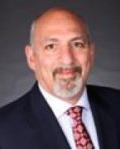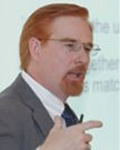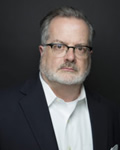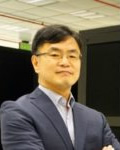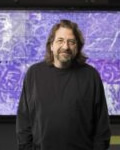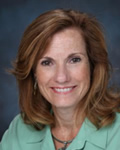Ralph McEldowney
Associate Director for Networking
DoD & SC18 General Chair

Mr. Ralph A. McEldowney serves as the Associate Director for Networking for the DoD High Performance Computing Modernization Program (HPCMP). In this capacity, he is responsible for the Defense Research and Engineering Network (DREN), the premiere high performance wide area network supporting the DoD Research, Development, Test and Evaluation (RDT&E) and Acquisition Engineering communities. Mr. McEldowney is responsible for a staff of 60 government employees and contractors, the management of nearly 170 DREN sites across 36 US states, and a $40 million annual budget. Mr. McEldowney provides program management oversight for the DREN III contract, a 10-year Firm Fixed Price contract valued at $750M.
Mr. McEldowney has over 30 years of Air Force civilian service with 22 years of experience supporting the DoD HPCMP in a variety of roles and responsibilities such as program management and team leadership; technology evaluation, acquisition and integration; system and network administration; and supervisory responsibilities. Prior to serving as the Associate Director for Networking, Mr. McEldowney served on the staff of the Air Force Research Laboratory (AFRL) DoD Supercomputing Resource Center (DSRC) as Chief of the Advanced Technologies Section at Wright-Patterson AFB, OH. In this capacity, he was responsible for the acquisition and integration of next-generation technologies for the AFRL DSRC, including high performance computers, high capacity storage, and high performance networking.
Mr. McEldowney earned a Bachelor’s degree in Electrical Engineering from the University of Dayton (Dayton, Ohio) in 1987, and a Master’s degree in Computer Science from Texas A&M University (College Station, Texas) in 1989.
HPCwire: Congratulations on being named General Chair for SC18! The SC18 theme is ‘HPC Inspires.’ There are many great examples of HPC-enabled science that are inspiring; the SKA keynote at last year’s SC is a great example. The LIGO work on gravity wave detection is another. Indeed, HPC has become pervasive in science and society. Could you give us a clearer sense of what you mean by HPC Inspires and the effect you hope to create within the HPC community?
Ralph A. McEldowney: The attendees and exhibitors at SC18 will be inspired by the innovation demonstrated on the exhibit floor, by the insights presented in the technical program, and the passion for HPC expressed by the entire SC community and committee volunteers. The SC community is amazing, coming together every year in November to inspire each other and the world by sharing the latest technologies and research accomplishments. We tried to capture this spirit of inspiration in the SC18 preview video shown at the conference last year. In the video, we pay homage to the ways HPC changes our world through inspiring science, leaders, and technology. In the video, we also pay homage to our predecessor conferences by recognizing that we are one in a series of great SC events where HPC Matters, HPC Transforms, HPC Connects, and HPC Inspires. If you or your readers haven’t seen the video yet, check it out on the SC18 website.
HPCwire: This year will be the 30th anniversary for SC, a significant milestone, which coincidentally it shares with HPCwire which is also celebrating its 30th. That’s a long time. Looking backward and forward, give us your sense of SC’s evolution and changing role in the HPC community until now and how you expect that role is likely to change. For example, in recent years there’s been an increase of industry content has part of a broader push to expand HPC deployment in the enterprise. How do you think the SC mission and conference will evolve going forward?
First, let me congratulate HPCwire on your 30th anniversary. Like the SC conference, this is a remarkable milestone that demonstrates not only your longevity, but positive impact on the HPC community as well. The growth of SC over 30 years has been nothing short of remarkable. From a small technical conference with a modest trade show, we now fill 300,000 square-foot convention centers with nearly 13,000 attendees and exhibitors. In fact, 50% of SC attendees make SC the only conference they attend each year.
To celebrate SC’s 30th anniversary, we will showcase multiple history exhibits, articles published in technical journals, and a surprise or two for attendees. We will also encourage the exhibitors to tell the history of their HPC technologies and innovations in their booths. And we will honor those companies and individuals who have either exhibited at or attended every consecutive SC conference. It is important for SC to reflect on its past and celebrate its successes. We will do both at SC18.
At its core, SC will always be the premier international conference for HPC with a world-class technical program and a world-class exhibit floor with the latest HPC technologies. The foundation of the SC conference has always been a unique mix of industry, academia and government institutions supported superbly by our sponsoring societies, IEEE-CS and ACM. In recent years, the greatly increased presence of international exhibitors and attendees has made the international community an additional foundational component of SC. The SC exhibit floor has greatly expanded in recent years too, as additional aspects of the HPC ecosystem has been displayed, such as cooling technologies, cable assemblies, and flash drives. Student programs at SC, including the Student Cluster Competition and Student Volunteers, have enriched the experience for our next generation attendees.
The SC conference will continue to evolve. SC18 will continue to support all of these major initiatives and look to embrace and support the next generation of attendees, exhibitors, and volunteer committee members. We will highlight industry start-ups, highlight the industrial uses of HPC, and actively encourage and support new members of the volunteer committee. The future is indeed bright for the SC conference.
HPCwire: What do you hope to see from the HPC community in the coming year?
This is an exciting time to be a part of the HPC community. In 2018, I fully expect the community will continue the advance towards exascale computing (due in the early 2020s); increase power efficiencies and green computing for HPC systems and components; deliver production-ready, native 400 Gigabit per second (Gbps) wide area network circuits; increase the use of HPC in the Cloud from commercial service providers; contribute to the ethical use of big data, artificial intelligence and machine learning; and advance the scientific research and understanding of HPC applications in our everyday life, in areas such as medicine, transportation, smart cities, and energy. Finally, I certainly hope the HPC community will embrace SC18 as the place to be in November, to celebrate our collective HPC history and our amazing successes in our community and on society. See you in Dallas!
HPCwire: Outside of the professional sphere, what can you tell us about yourself – personal life, family, background, hobbies, etc.? Is there anything about you your colleagues might be surprised to learn?
I was born and raised in Dayton, Ohio. I completed my undergraduate degree in electrical engineering from the University of Dayton, and my master’s degree in computer science from Texas A&M University. As an alum of UD, I have season tickets to the men’s basketball games. The Flyers have had a string of recent success, making it to March Madness each of the last four years, including an elite eight appearance in that span. They won’t make it this year, but the recent success has been wonderful to experience.
I’m also an avid runner and have completed 10 full marathons, countless half marathons, and innumerable shorter distance races. I run two or three times a week, year-round. However, my all-time favorite running event is the 200-mile relay. Each year I somehow convince 11 other crazies to run from Gettysburg, PA to Washington, D.C. with me on an epic 200-mile journey, requiring about 32 hours to complete. Each person runs three legs of about six miles every 10 hours. It’s great fun and turns running into a team sport as each individual member advances the baton towards the finish line.
As the race director for the annual SCinet 5K, I’ve also brought a little running to the SC committee. I started the non-competitive run/walk as SCinet Chair in 2009. The SCinet volunteers spend two weeks holed-up in the convention center installing, configuring, and operating the network each November. The SCinet 5K gets them outside the center in the fresh air, even if it’s only for an hour or so. Like all things SC, participation has grown from modest interest to over 75 participants at SC17. Last year’s SC General Chair even brought fresh doughnuts to the finish line! SC18 will be our tenth annual SCinet 5K run.


